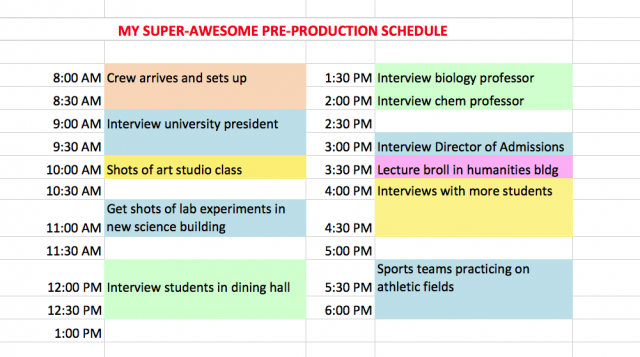 Just about everything in life requires a bit of pre-planning and scheduling, so it’s no surprise that solid video pre-production for a film shoot is going to lead to better results. Many clients aren’t sure how to best prepare for their filming days. In the words of one, more scientifically-inclined client, it comes down to “filling out the matrix.”
Just about everything in life requires a bit of pre-planning and scheduling, so it’s no surprise that solid video pre-production for a film shoot is going to lead to better results. Many clients aren’t sure how to best prepare for their filming days. In the words of one, more scientifically-inclined client, it comes down to “filling out the matrix.”
A matrix is one accurate way to think of it, though we’ve always just referred to it as a “schedule.” Whatever you call it, the key point is that you want to be filming uninterrupted from the beginning of the day to the end. This is a slight exaggeration because a short break here and there is good, but planning well during pre-production will ensure that you get the most from out of your day.
The interviews, of course, are all the people who might effectively communicate your message, and the b-roll is all the images that will be used to illustrate those points.
The importance of having great b-roll to help illustrate or reinforce your messages should not be underestimated. Because the times for capturing b-roll are often fixed (a certain activity only happens at a certain time), we recommend that you start by identifying the “must have” b-roll and inserting that into the schedule first.
There’s usually more flexibility with arranging interviews, so schedule them around the must have b-roll.
Look and see what holes remain in your schedule. Is there an activity that is taking place during those times that could be useful as b-roll? Or perhaps an additional interview? Even if this material doesn’t have tremendous value immediately, it might be of use later (see: creating a video asset library).
Finally, here are a couple of things to keep in mind as you are mapping out your schedule: